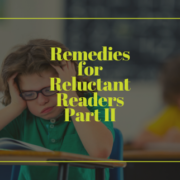Twice-Exceptional Students: Common Misconceptions
Parents of twice-exceptional (2E) students know all too well that their child’s learning can be more complicated than expected. Twice-exceptional students, once referred to as GTLD, are characterized by their gifted abilities and the fact that they meet the criteria for an IEP or 504 plan. With such a unique combination of learning strengths and weaknesses, it is no wonder that these learners are unfortunately misunderstood in the classroom. For parents, this can be even more disheartening. However, there are proactive measures that parents can take to help to mediate any future concerns.
Encourage your child to use his/her strengths as a head start or springboard in school. This means that certain skills or tasks can be made easier when students play to their strengths. For instance, if drawing and diagramming is a strength, but written communication or explanation presents an issue, encourage your child to sketch an explanation to a math problem, as opposed to writing it out. Your child is still completing the task and mastering the concept of explaining steps in a math problem; however, he/she is simply arriving at a response in a different manner. A major aspect of learning involves capitalizing on one’s strengths and maneuvering around weaknesses, which is exactly how 2E students can truly shine in the classroom. It is an unfortunate misconception that these unique types of learners are aloof or disinterested. This is simply not the case—quite the opposite, actually.
For twice-exceptional students to be able to exhibit mastery in alternate ways, parents must practice open communication with classroom educators from the get-go. While this sort of request could be misinterpreted, 2E students and their families are not seeking special treatment. They simply recognize learning strengths and their value. Parents should not be wary about these accommodations—differentiation is part of a teacher’s best practices in the classroom. But, in order to help our students, we must be made aware of their strengths and needs.
Twice-exceptional students, when either too challenged or not challenged enough, may become despondent or reluctant. A student’s boredom or frustration in the classroom can often be met with the same reaction—indifference. Again, parents should communicate these visible behaviors to the child’s teachers. The unfortunate truth is, teachers may potentially begin to see a 2E child’s reaction as “attitude” or “laziness.” These types of labels are obviously detrimental to a student’s education. Explain to teachers that your child’s manner in class is a reflection of his/her struggles—that varying the concept, task, or activity is a simple quick-fix.
Encourage your twice-exceptional student to keep a journal for reflection. This is a practice that not only allows students to track their own academic growth, but it also allows students to recognize patterns of strengths and weaknesses. When students understand themselves as learners, they can truly begin to become agents of their own education. The power of knowing how to succeed builds self-confidence, as well.






